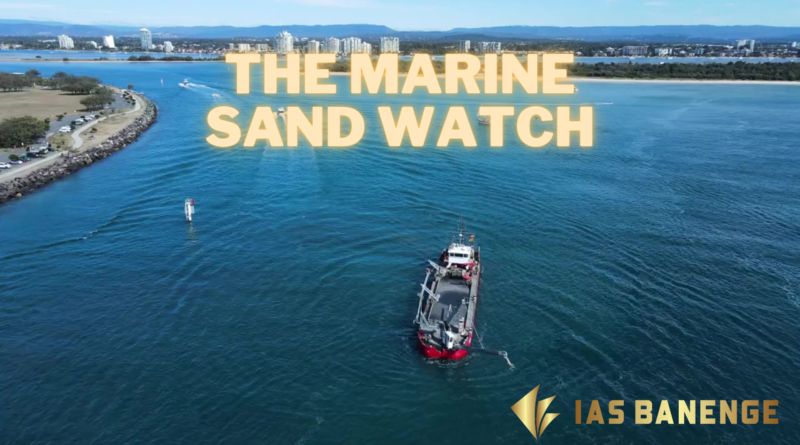About The Marine Sand Watch| Ias Banenge
Context:
Recently, a newly launched data platform called “Marine Sand Watch” sheds light on this critical issue, revealing the scale of sand extraction and its far-reaching consequences.
Relevance:
GS III: Environment and Ecology
READ MORE- NPCI (National Payments Corporation of India)| Ias Banenge
Dimensions of the Article:
- Marine Sand Watch
- Marine Sand Extraction
- Impacts of Marine Sand Extraction
- Responses to Marine Sand Extraction
Marine Sand Watch
The Marine Sand Watch is a significant initiative aimed at monitoring and tracking activities related to marine environment dredging. Here are the key details about this platform:
- Development: Marine Sand Watch is developed by a dedicated Centre for Analytics within the United Nations Environment Programme (UNEP).
- Scope: This platform focuses on tracking and monitoring the dredging activities involving various materials such as sand, clay, silt, gravel, and rock within the marine environment worldwide.
- Data Provided: It offers comprehensive information on several aspects, including:
- Areas designated for sand extraction.
- Regions involved in capital and maintenance dredging.
- Locations of sand trading ports and hubs.
- Data on the number of vessels and operators engaged in these activities.
- Monitoring of sediment extraction and various other types of operations conducted by countries with Exclusive Economic Zones (EEZs).
Marine Sand Extraction
Marine sand extraction is a significant activity involving the removal of sand from the seabed or coastal areas. It serves various purposes, including construction, land reclamation, beach nourishment, and even mining. Here’s an overview of the process:
- Dredging: Dredging is the most commonly used method for marine sand extraction. It employs vessels equipped with suction pipes or mechanical grabs to scoop up sand from the seabed. This sand is then transported to the shore or other locations for different applications.
- Mining: Mining is an alternative method for marine sand extraction. It involves specialized equipment, like drills, cutters, or jets, to break up sand deposits and extract valuable minerals or metals from them.
- Harvesting: Harvesting is a less common approach, relying on natural forces like waves, currents, or tides to collect sand from coastal zones and deposit it onshore.
Extraction Estimates:
- According to the platform’s data, the scale of marine sand extraction is substantial.
- It is estimated that between four and eight billion tonnes of sand are dredged from the ocean floor annually.
- Moreover, the extraction rate is projected to increase to a range of 10 to 16 billion tonnes per year.
- This rate is close to the natural replenishment rate, which is crucial for maintaining the structure and function of coastal and marine ecosystems.
Impacts of Marine Sand Extraction
The extraction of marine sand has several significant environmental and socio-economic impacts:
- Water Turbidity: Sand extraction can increase water turbidity, which measures the relative clarity of a liquid. This reduces water clarity and can negatively affect aquatic ecosystems.
- Nutrient Disruption: Sand extraction can disrupt nutrient availability in marine environments, potentially harming marine flora and fauna.
- Noise Pollution: The extraction process generates noise pollution, which can disturb marine organisms and their habitats.
- Coastal Risks: Coastal communities rely on sand for coastal defense structures, which are critical for mitigating rising sea levels and storm impacts.
- Offshore Infrastructure: Marine sand is essential for building offshore infrastructure, such as wind and wave turbines, which play a role in renewable energy production.
- Salinization: Coastal or near-shore extraction can lead to the salinization of aquifers, impacting freshwater resources.
- Tourism Impact: Sand extraction can hinder future tourist development in coastal areas, affecting local economies.
Responses to Marine Sand Extraction
Governments and international organizations have taken various responses to address the challenges of marine sand extraction:
India – Sand Mining Regulations:
- Sand is categorized as a “minor mineral” under India’s Mines and Minerals (Development and Regulations) Act, 1957.
- Administrative control over minor minerals, including sand, rests with state governments.
- The Ministry of Environment, Forests, and Climate Change (MoEFCC) has issued “Sustainable Sand Mining Management Guidelines 2016” to promote environmentally friendly sand mining practices.
- Several countries, including Indonesia, Thailand, Malaysia, Vietnam, and Cambodia, have banned marine sand exports in the past two decades.
International Seabed Authority (ISA):
- The International Seabed Authority (ISA) is an intergovernmental organization that regulates deep-sea mining and exploration in international waters.
- Established in 1982 under the United Nations Convention on the Law of the Sea (UNCLOS), ISA plays a role in governing activities in the international seabed area.
Way Forward:
- Sustainable alternatives to marine sand extraction are needed, including reducing demand through innovative construction materials, recycling, and circular economy principles.
- Exploring alternative sources of sand, such as manufactured sand from crushed rock, quarry dust, desert sand, or volcanic sand, is essential.
- Effective governance and regulation of marine sand extraction, including clear standards for environmental assessments, licensing, reporting, and auditing, are crucial.
- Initiatives like the UNEP Marine Sand Watch can contribute to better data and policymaking, but more cooperation and support from stakeholders are necessary for sustainable practices.
-Source: The Hindu





Pingback: About The Zero Draft Plastic Pollution Treaty| Ias Banenge